
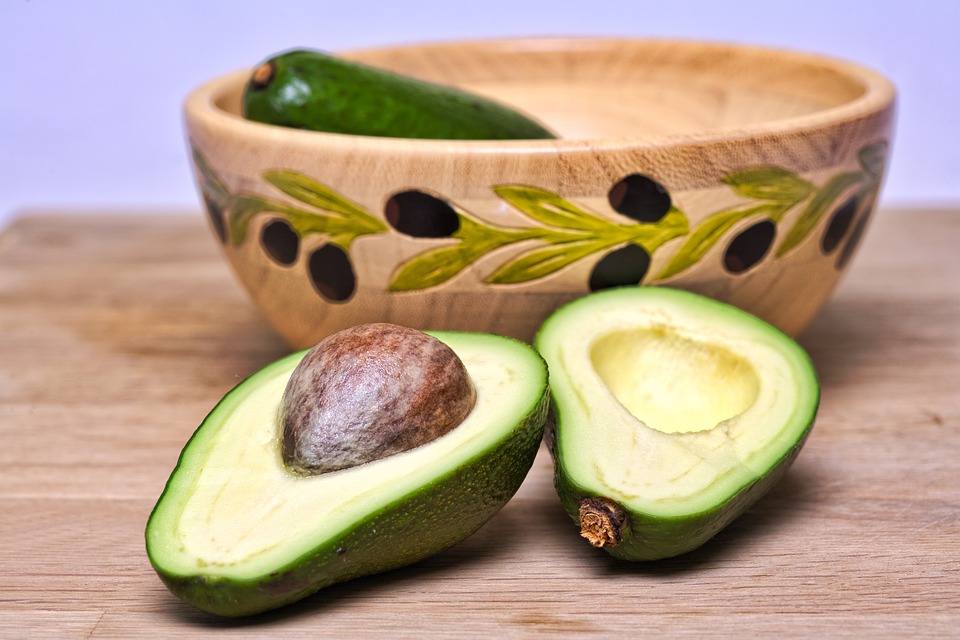
1) Avocado Pear
While avocado toast is a much hyped food trend in North America, Australia, and Europe, for Jamaicans it’s a typical combo. Most of us would be horrified to pay $23 USD for pear on bread!
That said avocado pear is a popular and versatile fruit. There’s even a new all-avocado restaurant opening in Amsterdam this year. While usually eaten as a savoury food, Asians, Africans and South Americans eat it in sweet treats like ice cream and milkshakes.
One unique way to make avocado a healthy but satisfying treat is to use it in dairy-free chocolate pudding. In a blender or food processor, mix your avocado pulp with unsweetened cocoa powder and coconut milk. Add honey to sweeten and you’ve made a creamy and intense chocolate pudding without dairy and processed sugar.
You can find more detailed recipes here, here, and here.
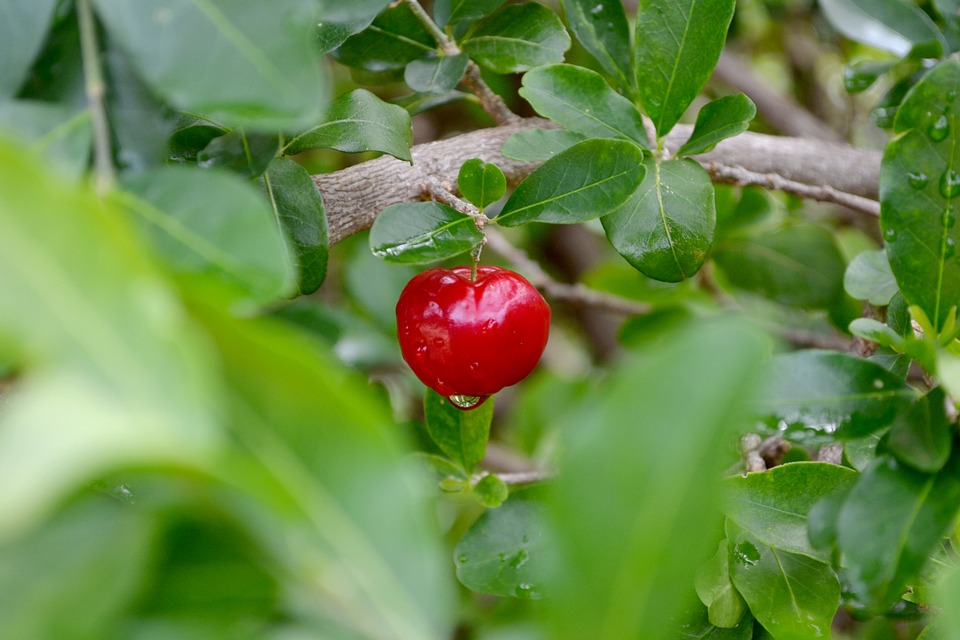
2) Acerola Cherry
Most Jamaicans enjoy acerola cherry as a tart fruit to snack on or make into a sweet and refreshing juice. Originating in Mexico’s Yucatan, acerola is grown in tropical parts of the globe.
A delicious way to eat acerola is combining it with fresh coriander leaves, garlic, and hot pepper to make a salsa or garnish packed with important vitamins, antioxidants, and minerals.
Follow the link to the recipe.
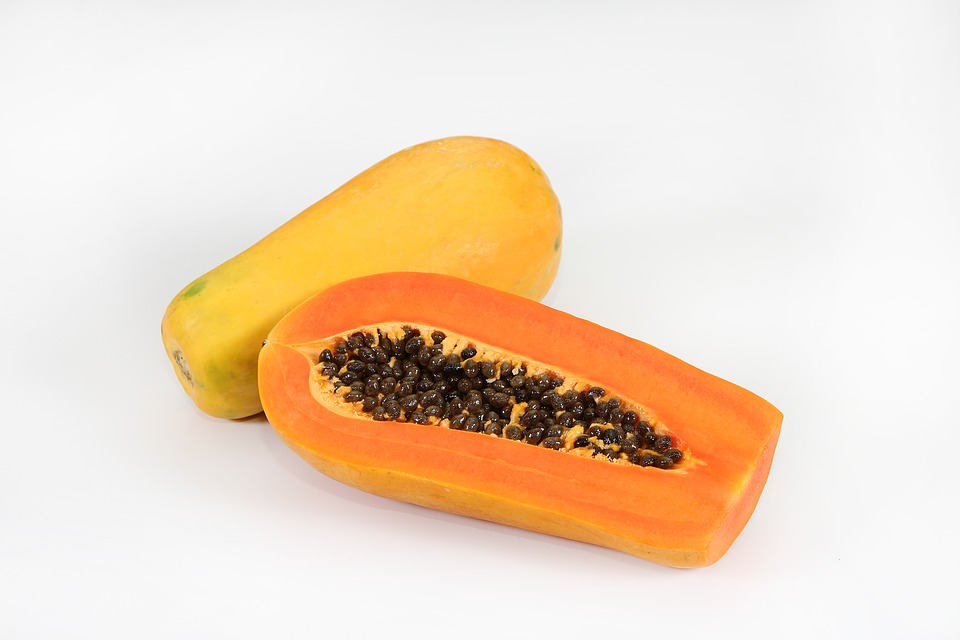
3) Pawpaw
Derived from the Carib or Kari’nja language, Papaya, which Jamaicans call pawpaw, is native to South and Central America and the Caribbean. Pawpaw contains a high amount of pectin, making it easy to turn it into preserves or jellies. The fruit is also used to make drinks or smoothies. Southeast Asian nations add green pawpaw to curries or stir-fry pawpaw flowers with chilies and vegetables. In East Africa they make pawpaw ketchup. Curacaoans stew the flesh of an almost ripe pawpaw with beef to make a dish called stoba. Some people even use the spicy black seeds of the pawpaw plant as a substitute for black pepper.
A classic Thai recipe is green papaya salad or som tam, usually made with unripe fruit, and sometimes barely ripe and fully ripe pawpaw. The pawpaw is shaved, chopped or shredded into long slivers, mixed with dried shrimp, roasted peanuts, and vegetables like tomatoes, long beans, carrots or cabbage. The salad is tossed in a dressing made from garlic, herbs, chillies, palm or coconut sugar and fish sauce.
Here are some links to recipes for papaya salad using green, semi-ripe, and ripe fruit. Brown sugar easily replaces coconut and palm sugar. For an easy to make, vegetarian alternative to fish sauce, mix together water, pineapple juice, sugar, salt, and soy sauce.
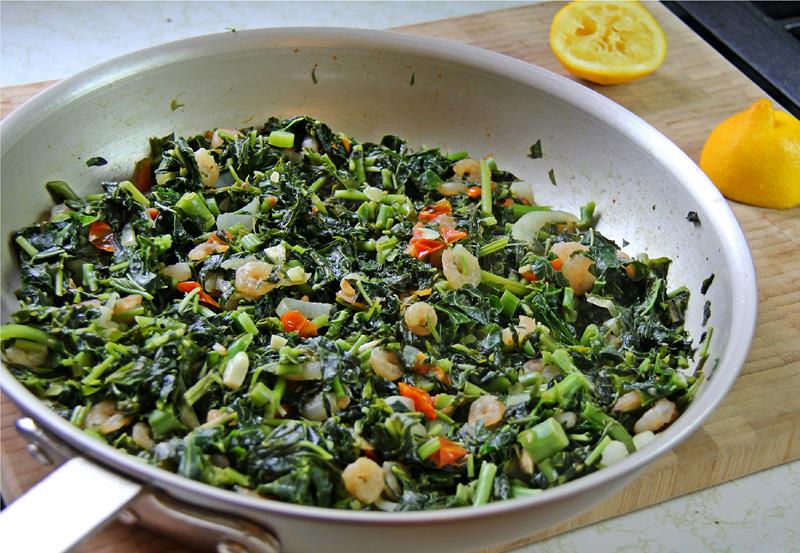
4) Callaloo
Most people know callaloo in its steamed or sautéed form, cooked with thyme, garlic, scallion, tomatoes, scotch bonnet pepper and salt fish. You can stuff it into your steamed fish or baked chicken breast or just eat it plain with yam, green banana, or rice. Most Jamaicans have had callaloo juice, callaloo rice, and callaloo soup.
Trinidadians make callaloo with dasheen leaves or water spinach, and cook it with okra, onions and seasoning. The Jamaican variety is made with green amaranth, which is also eaten in India, the Maldives, parts of Africa and Greece.
Uncommon Jamaican recipes include callaloo fritters and callaloo dip. Even more unusual is using callaloo to make a Caribbean lasagne, complete with a coconut béchamel sauce. Greeks called callaloo vlita and boil it before dressing it with lemon juice and olive oil. In Bangladesh, where callaloo is known as note shaak, they stir-fry it with peanuts, garlic, chillies, and dal vadi, nuggets made from mung bean.
Callaloo seeds are known for their sweet and nutty flavour, and are used to make biscuits and porridge or used to thicken soups.
It is often used in place of spinach in quiche, which is an excellent way to get all the iron, potassium, and calcium that make callaloo incredibly healthy.
Here is a recipe for callaloo quiche, along with a gluten-free crust-less version.
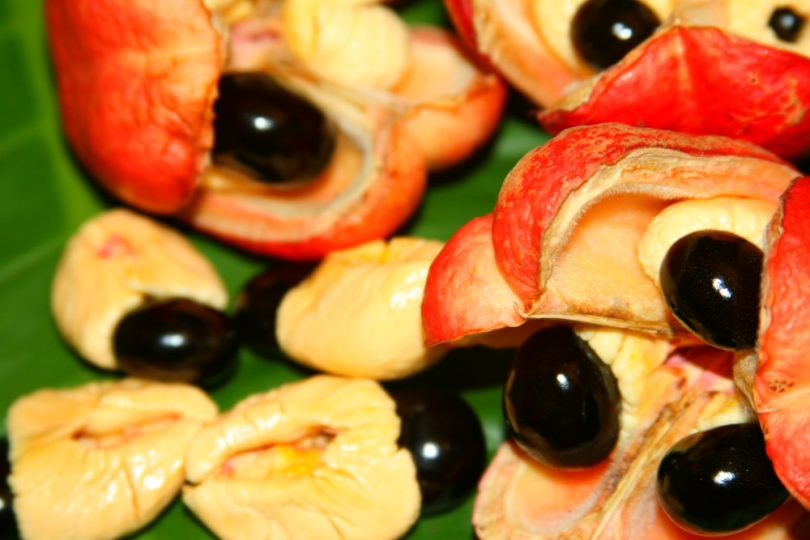
5) Ackee
Although the ackee tree is originally from West Africa, Jamaica is the only country that traditionally eats its fruit. Ackee is rich in unsaturated fats and low in cholesterol. It’s also packed with Vitamin B-1, B-2, and B-3, which together aid cardiovascular and digestive health, as well as boosting metabolism.
Jamaicans have strange and creative ways to use ackee. Other than as part of Jamaica’s unofficial national dish, ackee can be eaten in patties, soups and stews, curried, or even creamed into a dip. One restaurant sells fried ackee “wontons.” Perhaps you have even seen Journey’s End Ackee Wine on the shelves of your local supermarket.
But the strangest, bravest, most unique use of ackee that has ever graced our shores, is the truly original ackee cheesecake. Published in the 2008 cookbook Nyam Jamaica by Rosemary Parkinson, the recipe combines chopped ackee with eggs, sugar, cream cheese and ice cream to make a creamy filling that once poured over a biscuit crust is baked in the oven.
The recipe, created by the chef Sampath Balapatabendi, can be found here.
